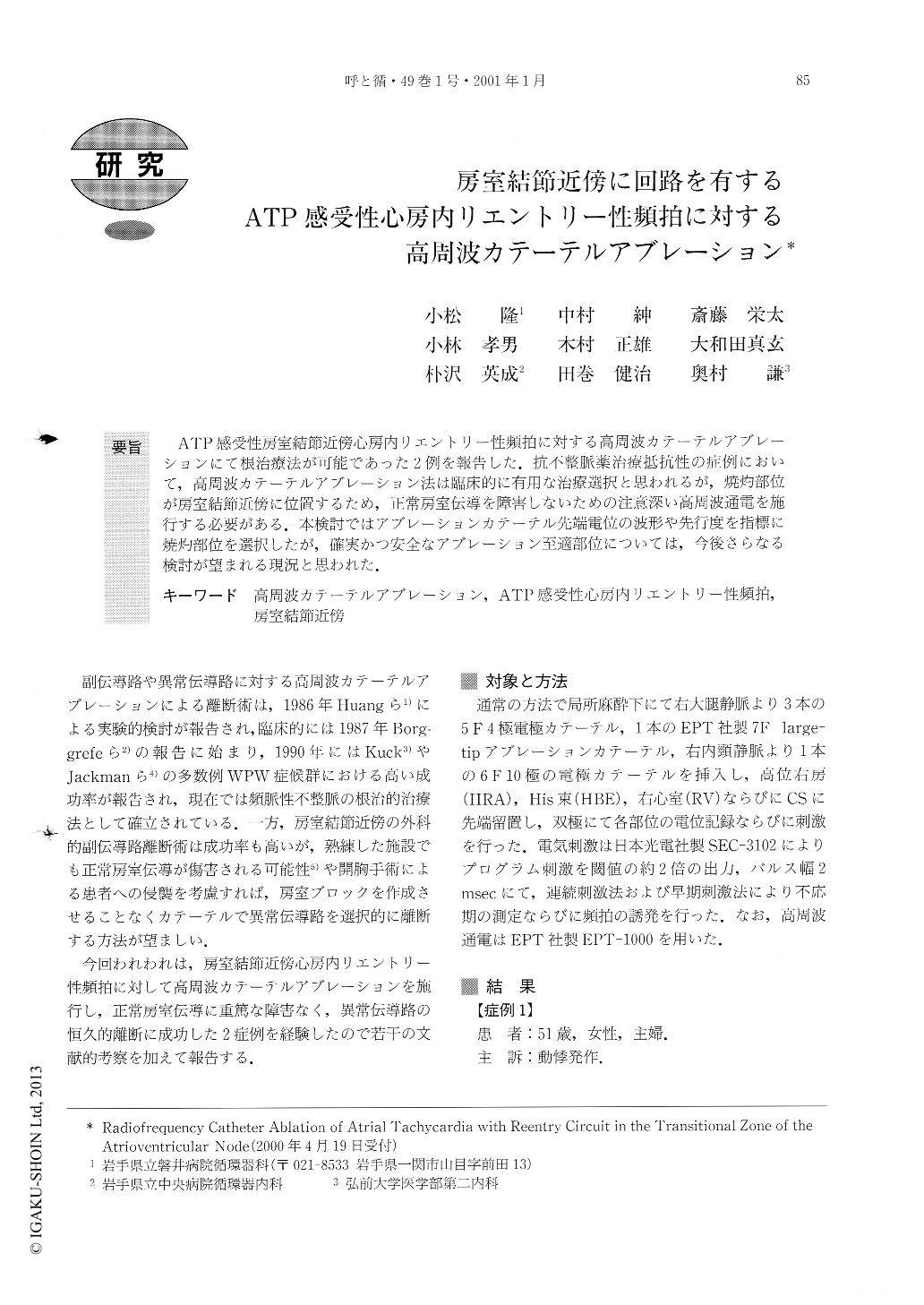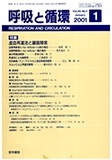Japanese
English
- 有料閲覧
- Abstract 文献概要
- 1ページ目 Look Inside
ATP感受性房室結節近傍心房内リエントリー性頻拍に対する高周波カテーテルアブレーションにて根治療法が可能であった2例を報告した.抗不整脈薬治療抵抗性の症例において,高周波カテーテルアブレーション法は臨床的に有用な治療選択と思われるが,焼灼部位が房室結節近傍に位置するため,正常房室伝導を障害しないための注意深い高周波通電を施行する必要がある.本検討ではアブレーションカテーテル先端電位の波形や先行度を指標に焼灼部位を選択したが,確実かつ安全なアブレーション至適部位については,今後さらなる検討が望まれる現況と思われた.
Radiofrequency catheter ablation was successfullyperformed in two patients with adenosine-sensitiveintraatrial reentrant tachycardia orginating from theatrioventricular nodal transitional area. It was effectiveto treat antiarrhythmic drug resistant intraatrialreentrant tachycardia by using radiofrequency catheterablation, but it was important to perform careful catheter ablation without injury of the normal atrioventricular conduction system, because there was reentrycircuit in the transitional zone of the atrioventricularnode. We selected the ablation site showing “fractionation with atrial wave in the intracardiac electrogram”and “precedence from P-wave in the body-surface electrocardiogram”. We concluded that radiofrequencycatheter ablation was an established treatment forintraatrial reentrant tachycardia, but the best methodfor deciding a perfectly safe and effective ablation sitein the atrioventricular nodal transitional area is stillcontroversial.

Copyright © 2001, Igaku-Shoin Ltd. All rights reserved.


